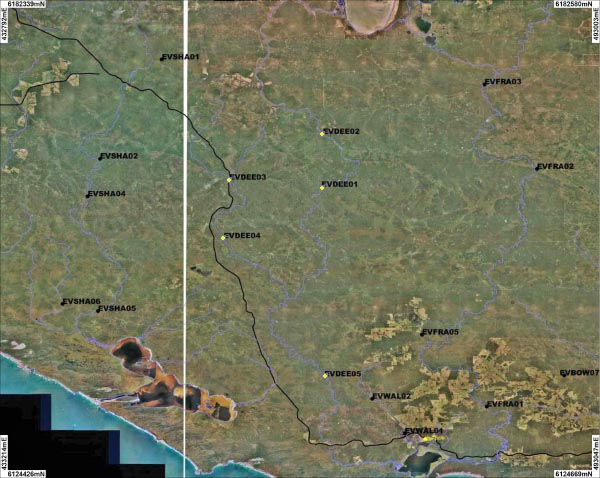Deep River

Five sites across the Deep River catchment were sampled. Three of the sites are on the Deep River and two of the sites are on the Weld River. An overview of the sites is shown on the map above. Photographs are available for each site:
Background
The Deep River starts on the edge of the Yilgarn Plateau, west of Lake Muir, about 50 kilometres from the coast. Lake Muir has overflowed into the river only once this century. From the plateau, it flows in an incised valley through granite hills before meandering across a short coastal plain to the west side of the Nornalup Inlet.
The Deep River has been classified as a Wild River by the Australian Heritage Commission.
The five sites were sampled in November 2007.
Fish
Western Minnow, Western Pygmy Perch and Night Fish were found at all of the sites. Mud Minnow, which is list as restricted on the Australian Society for Fish Biology's list of threatened fishes, was found at sites DEE03 and DEE04. The Balston's Pygmy Perch was found at sites DEE01, DEE02 and DEE03. Marron, a Koonac species and freshwater crayfish species
Cherax crassimanus were also found in the River.
Pictures of these can be viewed in the
gallery.
River foreshore vegetation condition
The Deep River is in pristine condition with all sites being in A grade condition. There was no evidence of degradation at the sampled sites.
Water Quality
Water samples were taken once from each site so while they help describe the water quality at the time of sampling they can not be used to explain the overall condition of the river for the rest of the time.
The Deep River is a fresh water system with an average conductivity reading of 0.4mS/cm.
The River is naturally acidic with every site recording a pH below 5.98. All sites ranged between a pH of 5.98 and 4.65.
Sites DEE04 and DEE05 recorded very high levels of turbidity, which were greater than 25 NTU. Sites DEE02 and DEE03 recorded high levels and DEE01 recorded a low level.
The level of total phosphorus at each of the sites was low, while only DEE02 and DEE05 recorded a low level of total nitrogen. The remaining sites had levels of total nitrogen that moderate levels that ranged between 810 and 890μg/L.



